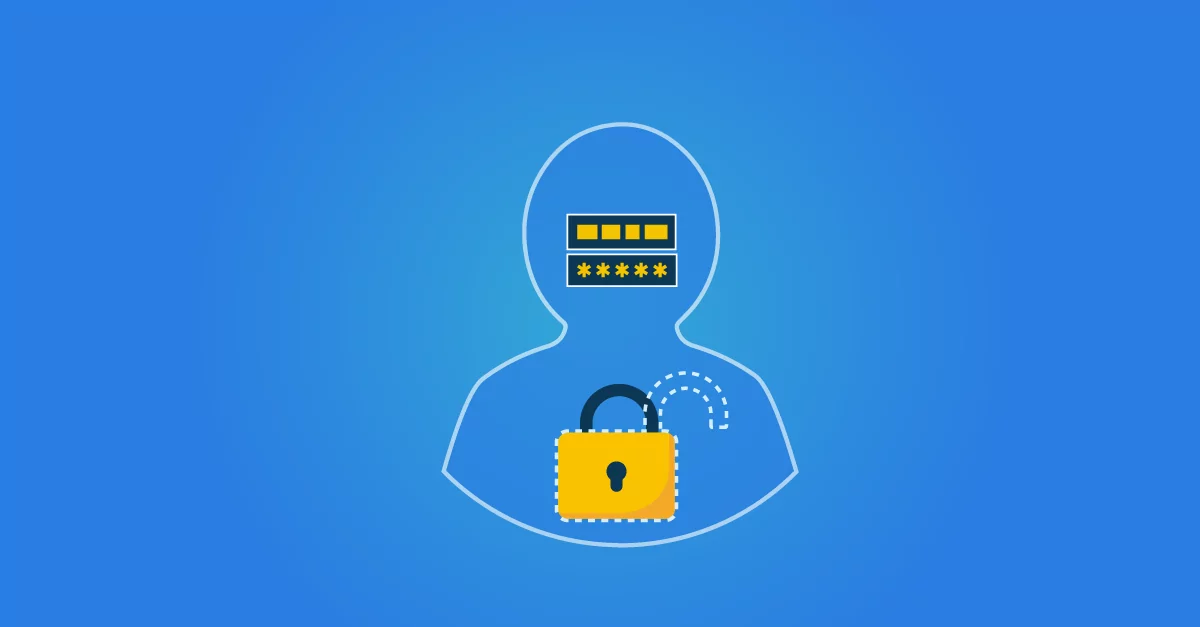
Single-Factor Authentication (SFA)
Authentication within IAM can be arranged and set up in different ways. You can opt for single-factor authentication (SFA), two-factor authentication (2FA) or multi-factor authentication (MFA). The idea behind the three variants is the same, but it is the number of steps and credentials used that differs.
What is single-factor authentication?
Single-factor authentication is the simplest and most basic form of authentication. You use just one credential to verify your digital identity when you want to access a device, application, digital environment or online service. Usually, this is a self-chosen or assigned password that you enter after providing your username. Especially in a B2C setting (webshop, digital service), it is the verification method that is still most often used.
Logging into your favourite webshop? Unlocking your smartphone after it has been inactive for a while? Viewing or updating your booked holiday in the booking portal of the travel organisation? These are all examples of single-factor authentication that we frequently encounter in everyday practice.
What is the benefit of single-factor authentication?
The biggest advantage of single-factor authentication is straightforward: it is a quick and straightforward verification method. You only have to take a few steps (after entering your password, you gain access to the desired device, file or system with a single mouse click) and only need to remember and have your username and password at hand.
Is single-factor authentication not secure?
If you have a strong, hard-to-crack password, single-factor authentication isn't necessarily not secure. However, it is of course true that with this method you are more vulnerable than if you were to use two-factor or multi-factor authentication. Gaining access to your password is sufficient for hackers or cybercriminals to access your applications, files, systems or services under the guise of your identity.
There are several ways hackers can figure out your password. They might know you personally or have access to personal information that is frequently incorporated into passwords. Common examples include birthdates, your place of residence, your pet's name or the names of your favourite actors and artists. Sometimes, cybercriminals also use bots capable of 'bruteforcing' the right combination of letters, numbers and special symbols.
Generally, the following rule applies: if a password is easy to remember, it is also easy for hackers and cybercriminals to guess or crack. Therefore, single-factor authentication is only effective when paired with good password management.
If a hacker breaches the relatively thin security barrier posed by the combination of single-factor authentication and a weak password, recovering your accounts often takes a lot of time and effort. Moreover, if you use the same password for multiple applications, the attacker can exploit your digital identity in multiple places.
A simple but outdated method
All in all, single-factor authentication serves as a straightforward and convenient way to verify a user's identity. However, the consensus is increasingly that single-factor authentication has now become an outdated concept. While effective in the past it is no longer robust enough to combat the cyber threats of today. We also observe that two-factor authentication and multi-factor authentication are becoming the standard in business environments. This is a natural progression, given that these methods offer a significantly higher level of security. However, their use can be more complex and time-consuming. Therefore, it is essential for organisations to carefully consider the trade-offs between these different approaches and choose the one that best meets their security needs.